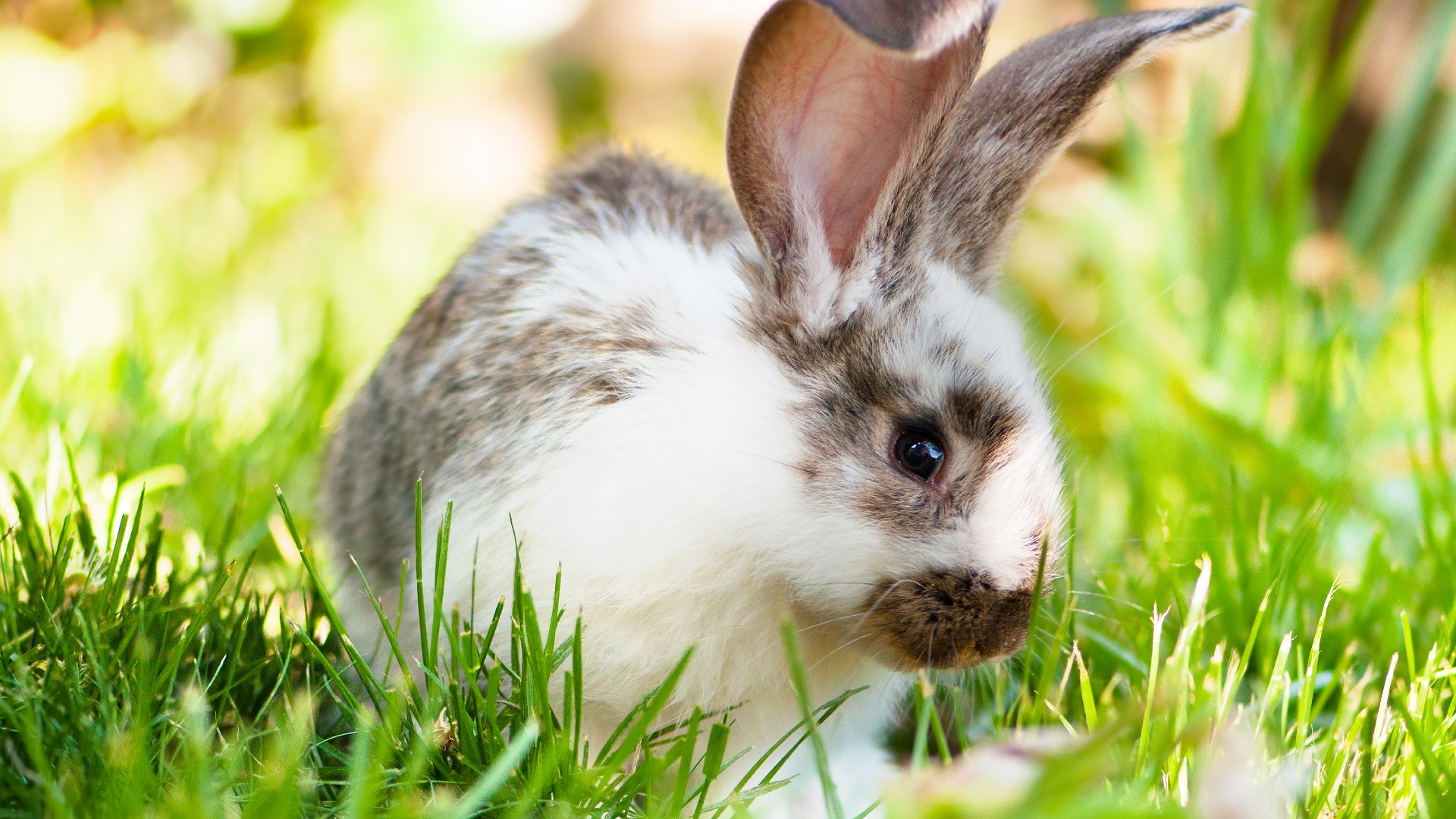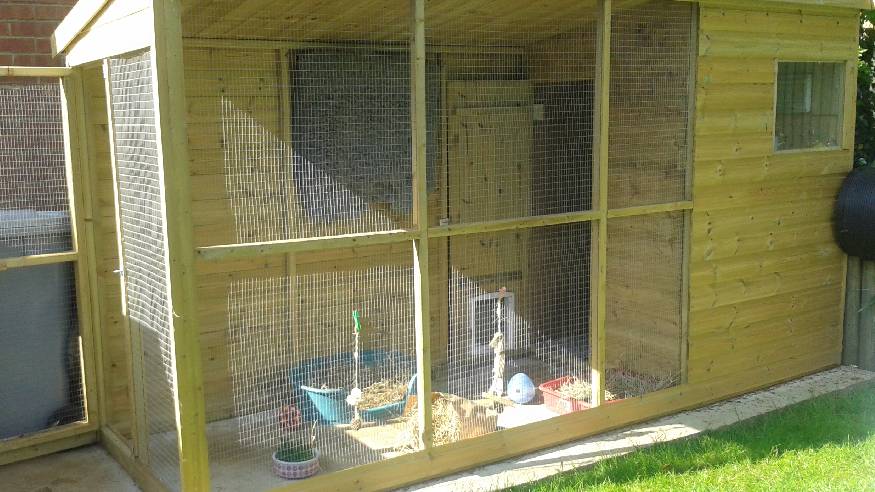Housing rabbits outdoors: Everything you need to know
If you’re thinking about housing rabbits outdoors, you might have some questions about what’s best, so we’ve put them to a vet

If you’re researching about housing rabbits outdoors, the chances are you probably have some questions about how it all works. How much space do they need? Can they stay outdoors overnight? What about in winter?
We’ll take a look at how you can house your new pets so that they stay happy and healthy while living their best outdoorsy life. To find out exactly how you can do that, we spoke with vet Dr Rebecca MacMillan to get her top tips and some answers to your questions.
Can rabbits live outside?
The short answer is yes, but with caveats. Wild rabbits live outside, but in warrens where the temperature remains fairly stable across the seasons. However, your pet rabbits won't have access to a warren, so they'll need a suitable alternative. We’ll talk about the measures you can take to keep your rabbits cosy and snug year round further down.
How much space does an outside rabbit need?
“Outdoor rabbits should be provided with an exercise area that is a minimum of 3m x 2m x 1m [10ft x 6.5ft x 3ft] in height. They always need to have access to this, so that they can run, hop, and binky as they wish,” advises Dr MacMillan.
“They should be provided with a sheltered indoor area to use for sleep and warmth. This can either be attached to the exercise area or included within its floor space. Many people use a hutch for this type of living area which should be a minimum of 1.8m x 0.6m x 0.6m [6ft x 2ft x 2ft] high,” she adds.
This might seem like a lot of space, especially for those who grew up thinking rabbits lived in hutches, but this is how much space rabbits need to stay healthy and happy. “This allows rabbits plenty of space to move around and stretch out. Remember that a hutch is never enough, so your rabbits should always have free access to their exercise area, not just at certain times of the day,” says Dr MacMillan.

Can I leave my rabbit outside at night?
Yes, your rabbits can live outside including overnight so long as certain conditions are met. As we mentioned before, it’s important that their sleeping area remains warm enough overnight. You’ll also want to keep your rabbits safe.
Get the best advice, tips and top tech for your beloved Pets
“You should make sure that your rabbits' enclosure is predator-proof and that you check it regularly for wear and tear,” advises Dr MacMillan.
Can rabbits stay outside in winter?
Your outdoor rabbits can stay outside over a typical winter, so long as their accommodation is warm enough and you are keeping at least a pair of rabbits as their body heat will help keep each other warm. During extreme weather conditions, however, you may want to bring your rabbits inside.
“You must also provide your rabbit with plenty of quality bedding material, especially in the cooler winter months. Keeping two bonded rabbits together will help greatly with temperature regulation. Having a companion is not only important for rabbits socially, but also for snuggling up and sharing body warmth in cold weather spells,” says Dr MacMillan.
You can also take extra measures to make sure their accommodation is as warm as possible when the temperature dips.
“Ensure that your rabbits' hutch is well insulated, and situate the entire enclosure somewhere sheltered from the elements if possible. You could use a sheet of tarpaulin attached to act as a windbreaker if needed. Check bowls or sipper bottles regularly to make sure that your rabbits’ water does not become frozen during particularly bad cold snaps,” Dr MacMillan.
You can permanently insulate the sleeping area by lining the inside of the sleeping area with plywood and leaving a gap between the ply and the walls and floor, which can be filled with roof insulation. If you want to add a sheet of tarpaulin like Dr MacMillan suggests, buy some with eyelets so you can fasten in place with cable ties.
Here's some more advice on how to keep a rabbit warm in the winter and rabbit winter care.
Heavy Duty Tarp Cover | Amazon
Available in a wide range of colours and sizes, this tarpaulin could be just what you need to offer your rabbits some additional protection.
You can purchase hutch covers in a range of shapes an sizes to add an extra layer of protection to your outdoor hutch.
What accommodation does an outside rabbit need?
When it comes to housing rabbits, the bigger and more enriching the space is, the better. Think how much space wild rabbits have! Most of us can’t replicate this, few gardens are big enough to mimic the wild, let alone secure enough for domestic rabbits to live in safely. But we can do the best we can with the space we have.
The best outdoor rabbit hutches should have a secure exercise space (minimum of 10ft x 6.5ft x 3ft), as well as a separate sleeping area (minimum 6ft x 2ft x 2ft). Within the space they need to be able to run, dig, sleep, explore, forage, play and interact with at least one other rabbit. You can enrich their outside space by adding hides, digging boxes and the best rabbit toys to explore.

Alternatives to rabbit hutches
Your rabbit's sleeping accommodation needs to be safe and secure, but you don’t have to necessarily use a hutch. Alternatives to hutches include:
- Outdoor dog kennels
- Aviaries
- Garden shed
- Children’s play house
When thinking outside the box, make sure the option is suitable for rabbits. For example, the wire on an aviary or dog kennel would need to be small enough to stop the rabbit from getting their feet trapped and prevent rodents from entering (13mm/0.5in is a good standard to aim for). Chicken wire will not be secure enough to stop predators like foxes.
If you do choose to buy a hutch alternative, you can buy a connection kit to allow the rabbit safe access to their exercise area.
If you’re researching pets to get, we think outdoor rabbits are a brilliant option. They’re fun-loving, seriously sweet and full of character. Just make sure you do your research and can provide the right lifestyle for your new pets before you rush out to rescue a pair.
Want to know more about rabbit care? We’ve put together some info about how to keep a rabbit cool in the summer and which plants are poisonous for rabbits.

Abby is a freelance writer and dog owner. She currently has two golden retrievers, Lowen and and Indy, but has previously had many other pets, including rabbits.
Abby has written for Metro, House Beautiful, Fit+Well, and more. Alongside this, Abby also volunteers at a local dog rescue centre, helping out with daily activities, such as walking, feeding and grooming.


